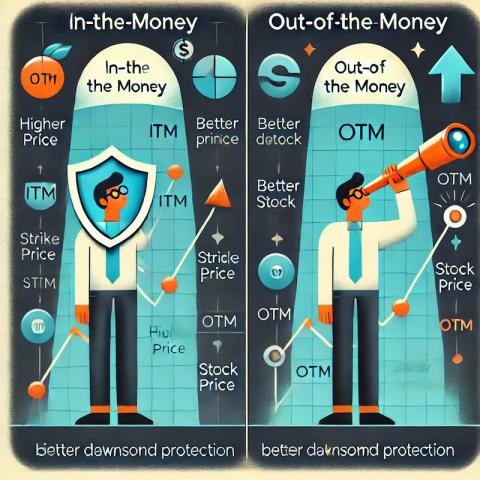Covered calls are a cornerstone strategy in options trading, especially for investors looking to generate consistent income from their stock holdings. This strategy involves selling call options against stocks you already own. There are two main types of covered calls you can sell: In-the-Money (ITM) and Out-of-The-Money (OTM). Each has its advantages and risks, making them suitable for different investment objectives and market conditions.
What are Covered Calls?
Before diving into the specifics of ITM and OTM covered calls, let's briefly review what a covered call is. A covered call strategy involves holding a long position in a stock and selling a call option on the same stock. The primary goal is to earn premium income from the options, which can provide a buffer against downside risks and enhance overall portfolio returns.
In-The-Money (ITM) Covered Calls
Definition and Mechanics: An ITM covered call involves selling a call option where the strike price is below the current market price of the stock. This type of call option has intrinsic value and will likely be assigned, meaning you may have to sell your shares at the strike price if the option is exercised.
Advantages:
- Higher Premiums: ITM calls offer higher premiums than OTM calls, which can be attractive in a flat or declining market.
- Greater Downside Protection: The higher premium provides a cushion against declines in the stock price, offering better protection than OTM calls.
Risks:
- Limited Upside Potential: Since the strike price is below the current stock price, you cap your gains at a lower level, potentially missing out on significant upside if the stock rallies.
- Higher Likelihood of Assignment: There's a greater chance the shares will be called away, especially if the stock remains above the strike price at expiration.
Out-of-The-Money (OTM) Covered Calls
Definition and Mechanics: An OTM covered call involves selling a call option with a strike price above the current market price of the stock. This option does not have intrinsic value at the time of selling and will not be assigned unless the stock price exceeds the strike price.
Advantages:
- Potential for Stock Appreciation: Selling OTM calls allows you to participate in some of the upside potential if the stock price increases, as these calls are less likely to be assigned.
- Income Generation: While the premiums are lower than ITM calls, they provide an additional income stream without the immediate risk of losing your stock position.
Risks:
- Less Downside Protection: The premiums from selling OTM calls are lower, offering less protection against a drop in the stock price.
- Missed Opportunity: If the stock price skyrockets beyond the strike price, you could miss out on significant gains due to the obligation to sell the stock if the option is exercised.
Choosing the Right Strategy
The choice between selling ITM and OTM covered calls depends on your market outlook and investment goals:
- Market Outlook: If you anticipate a decline or minimal movement in the stock price, ITM covered calls can provide better downside protection. Conversely, if you expect moderate growth, OTM calls allow you to enjoy some price appreciation while still generating income.
- Investment Goals: Consider what is more important to you—higher income and protection (ITM) or the potential for stock appreciation with some income (OTM).
Conclusion
Selling covered calls is a nuanced strategy that can enhance your investment portfolio's performance. By understanding the differences between ITM and OTM covered calls, you can better align this strategy with your financial goals and market expectations. Always consider your risk tolerance and consult with a financial advisor to tailor the approach to your specific needs.
